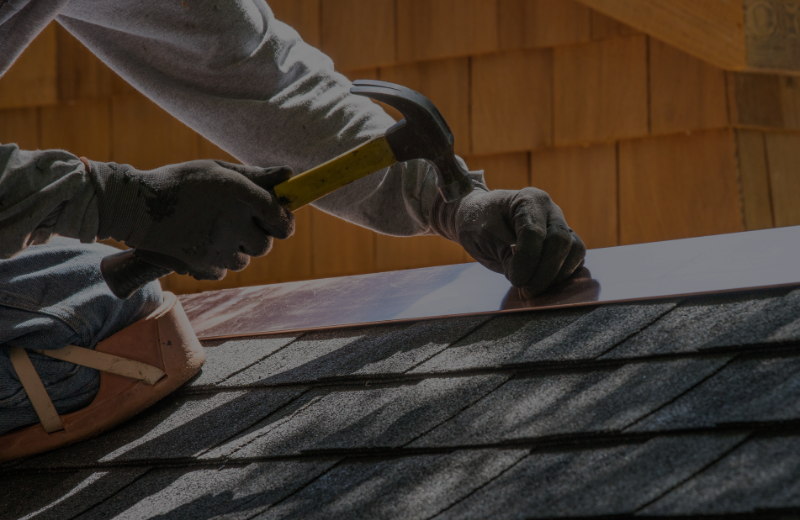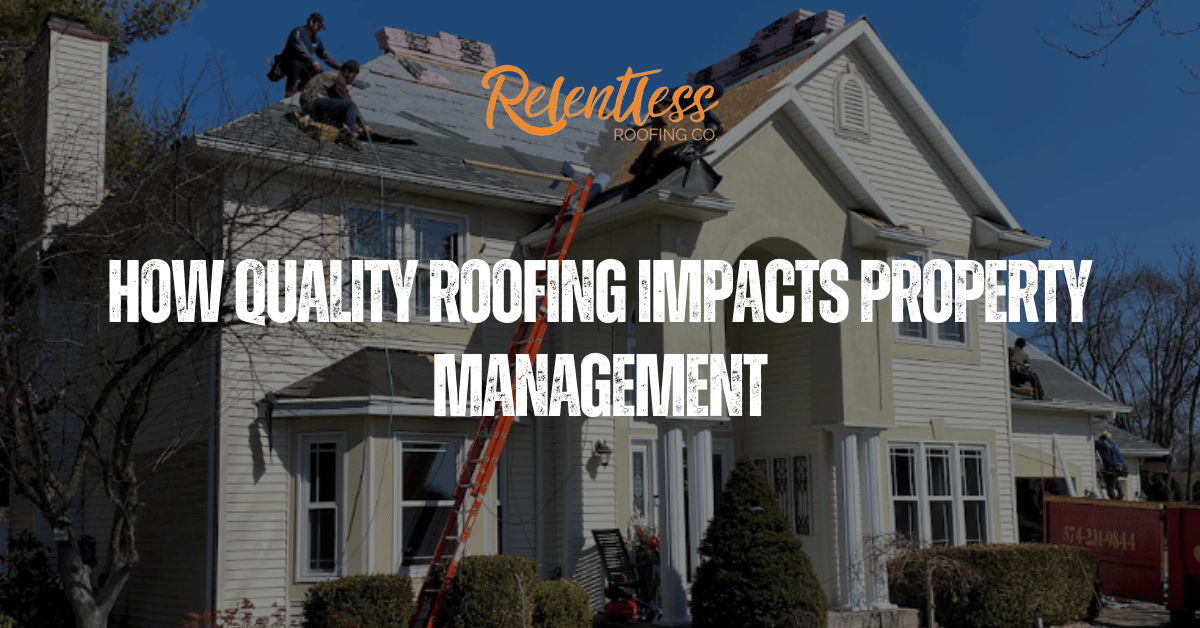A leaking roof during a rainstorm can be a stressful experience. Roof leaks can lead to significant damage, not only to your roof but also to your home’s interior and structure. Water intrusion during rainstorms can compromise the safety of your home, damage your belongings, and even pose health risks due to mold and mildew growth.
Knowing how to respond quickly and effectively is crucial to minimize damage and protect your property. In this article, we’ll provide a detailed guide on what to do when your roof leaks during rain, along with steps to address the issue both temporarily and permanently.
Why Does My Roof Leak During Rain?
A roof leak during rain is a common yet concerning problem that can stem from various underlying causes. Understanding these reasons can help you address the issue effectively and prevent future occurrences. Here are some of the most common causes:
Damaged or Missing Shingles
Heavy rains and strong winds can loosen or displace shingles or roof tiles, creating gaps for rainwater leaks to seep through. Over time, natural wear and tear can weaken shingles, reducing their effectiveness. If these shingles are not replaced promptly, the issue can escalate, leading to roof leak repairs that could have been avoided with timely action.
Improper Flashing Installation
Flashing is essential for sealing roof joints around chimneys, vents, and skylights. If improperly installed or deteriorated, flashing becomes a common entry point for water during rain. Flashing around vents and chimneys requires particular attention during inspections, as these areas are frequently the source of leaks.
Clogged Gutters
Clogged gutters prevent proper drainage, causing water to pool on the roof. This excess water can seep under shingles, contributing to leaky roof problems. Routine gutter maintenance can prevent these issues and maintain proper water flow during heavy rain.
Cracks Around Roof Features
Features like skylights, vents, and chimneys often develop cracks over time. These gaps can act as entry points for water leaks, leading to interior water damage and even mold growth if left unaddressed.
Aging Roof Materials
As roofing materials age, they lose their ability to repel water effectively. An older roof is more prone to leaks, especially during prolonged or heavy rain. Investing in high-quality materials during a roof replacement can mitigate such risks.
Improper Installation
Errors during the roof replacement process, such as inadequate sealants or misaligned materials, often result in leaks. It’s crucial to hire experienced and quality roofing contractors to ensure proper installation.
Ponding Water on Flat Roofs
Flat or low-sloped roofs may develop areas where water pools after rainfall. Persistent ponding deteriorates the roofing material, eventually causing leaks. Using a professional to inspect flat roof leaks can help prevent significant damage.
You may also read: How do roof leaks happen on commercial buildings?
Immediate Actions to Take When Your Roof Leaks in Rain
When your roof starts leaking during rain, immediate action is necessary to prevent further damage. Here’s how to respond effectively to address the issue:
1. Clear the Area
Move furniture, electronics, and other valuable items away from the wet spots caused by the roof leaks. Cover immovable items with plastic sheets or tarps to prevent interior water damage. Removing these items also helps create a clear workspace for cleanup and temporary repairs.
2. Contain the Water
Place buckets, pots, or any large containers under the leak to catch dripping water effectively. Use towels or mops to soak up water from the floor to prevent it from seeping into flooring materials, which can cause further damage. Regularly empty the containers to avoid overflow.
3. Minimize Electrical Risks
If water is near electrical outlets, wiring, or appliances, immediately turn off the electricity to the affected area from your circuit breaker. Avoid touching wet electrical equipment, as it can pose a serious safety risk. Consult a professional electrician if needed.
4. Identify the Source of the Leak
Inspect your attic for dark spots, visible dripping, or other signs of water entry. Check the roof decking for gaps and cracks, and look for clogged gutters or damaged areas that could be contributing to the problem. Identifying the source of the leaks early allows for more effective temporary fixes.
5. Apply a Temporary Fix
Use tarps, roofing tar, or duct tape to cover the damaged area temporarily. These measures act as temporary solutions until professional repairs are completed. If the damage is severe, consider reaching out to emergency roofing services for immediate assistance.

Steps to Address the Leak After the Rain Stops
Once the rain has stopped, you can take more comprehensive steps to resolve the leak and prevent future issues. Taking these proactive measures ensures your roof remains durable and effectively protects your home from potential damage:
1. Inspect the Roof Thoroughly
Conduct a detailed inspection of your roof tiles, shingles, and flashing. Look for missing, curled, or cracked shingles and gaps in roof valley flashing. Examine chimneys and skylights for cracks or deteriorated seals. Pay special attention to sagging areas or signs of structural compromise, such as pooling water on flat roofs.
2. Document the Damage
Take clear photos and videos of both the interior and exterior areas affected by the leak. Include details like water stains, damaged insulation, and compromised roof flashing. These records will be invaluable for insurance claims or consultations with contractors.
3. Call a Professional Roofing Contractor
Contact a reputable roofing professional to assess the situation. Experienced roofers can provide effective solutions for roof repair and ensure long-term protection. Always verify that the contractor is licensed, insured, and experienced in addressing leaks.
4. Check Your Warranty and Insurance
Review your roof warranty and home insurance policy to understand what repair costs may be covered. Promptly notify your provider to avoid delays, especially for extensive damage requiring significant repairs.
4. Schedule Repairs Promptly
Delaying roof leak repairs can lead to worsening structural damage and mold growth. Work with your contractor to schedule repairs as soon as possible, and discuss long-term solutions like replacing damaged materials or reinforcing flashing.
Why Acting Quickly on Roof Leaks Is Important?
Acting quickly on a leaky roof is crucial to prevent serious consequences that can compromise your home’s integrity and safety. Prolonged water exposure can weaken beams, walls, and roof decking, leading to structural damage that requires extensive repairs. Moisture from leaks also promotes the growth of mold and mildew, posing health hazards and necessitating costly remediation efforts.
Delaying repairs allows water to cause further harm, significantly increasing repair costs over time. Additionally, neglecting timely action may void warranties, leaving you fully responsible for expenses that could have been avoided with prompt attention.
Preventative Measures to Avoid Roof Leaks
Taking proactive and consistent steps can play a crucial role in minimizing the risk of roof leaks while also significantly enhancing the durability and lifespan of your roofing system. These efforts not only protect your home from potential damage but also ensure that your roof remains in excellent condition for years to come.
Schedule Regular Inspections
Routine inspections by a professional roofer can identify potential issues before they escalate. Aim to schedule inspections at least twice a year—once in spring and once in fall—and always after severe weather events.
Maintain Gutters and Downspouts
Regular gutter maintenance ensures proper drainage and reduces the risk of water pooling on your roof. Clean gutters prevent clogged gutters, which are a common cause of leaks.
Trim Overhanging Branches
Overhanging tree branches can damage your roof during storms and deposit debris that clogs gutters. Regular trimming protects your roof and reduces additional damage risks.
Seal Flashing and Joints
Reinforce flashing around vents, chimneys, and skylights with high-quality sealants to prevent water infiltration. Periodic resealing helps maintain the effectiveness of these vulnerable areas.
Invest in Durable Roofing Materials
Choose high-quality, weather-resistant materials during a roof replacement to prevent premature wear and tear. Durable roofing materials reduce the likelihood of leaks and prolong your roof’s lifespan.
Ensure Proper Ventilation
Adequate attic ventilation helps regulate temperature and reduce moisture buildup, preventing condensation that can lead to leaks. Inspect attic vents and ensure they are unobstructed to maintain optimal airflow.
Frequently Asked Questions (FAQs)
What should I do immediately if my roof starts leaking during rain?
A: If your roof leaks during rain, act quickly by moving valuables away from the affected area, containing the water with buckets, and turning off electricity in the impacted zone. Then, locate the leak’s source and apply a temporary fix like a tarp until professional repairs can be arranged.
What causes roof leaks during rain?
A: Roof leaks often occur due to damaged or missing shingles, clogged gutters, cracked flashing, aging materials, poor roof ventilation, or improper installation. Identifying the specific cause is essential for effective repairs.
How can I prevent roof leaks?
A: Preventative measures include scheduling regular roof inspections, maintaining clean gutters, trimming overhanging branches, sealing roof joints, and ensuring proper attic ventilation. Investing in durable, weather-resistant roofing materials also helps reduce the risk of leaks.
When is it best to contact a roofing professional for a roof leak?
A: You should contact a roofing professional for leaks if the damage is extensive, you can’t locate the source, or the repairs involve structural issues. Professional help ensures safety and long-lasting solutions.
How to find a leak in a flat roof?
A: To find a leak in a flat roof, look for visible damage like cracks, pooling water, or punctures near seams and edges. Inspect the interior for water stains, damp spots, or drips to trace the leak’s source.
Conclusion
A roof leak during rain is a serious issue that requires immediate attention to prevent extensive and long-term damage. By following this guide, you can safeguard your home and mitigate any potential issues. Whether you need temporary fixes or permanent solutions, acting quickly is essential to maintaining the integrity and value of your property.



